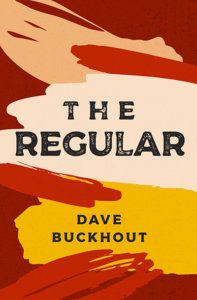On The Blue Ridge Parkway
Travelogue › October 27, 2008
Easy singing speed bends with the curving lanes, an asphalt ribbon grasping ridgelines tight. Shafts of late-day sun spray white silver over the parkway, as it bounds up from a veiled pocketed hallow. Autumn colors are at peak. Roaring gusts roll up through low mountain gaps. They blast through outstretched canopies. Leaves align parallel to earth with the gusts, scattering in clouds of burnt-ochre flakes. The gusts roll in succession. They power the marching thousands overhead. The procession of low stratocumulus drops distinct shadowfields that liquefy as they hit ground: organic undulating greys atop the lumbering pile of worn hillsides. The hills fade past. Tens of millions of years passing in a single view. The cataclysmic collision of plates that vaulted peaks into the sky has been left to time’s smooth vibe: jutting jagged cliffs dulled to rounded knobs, easy elliptical domes.
The parkway lopes: sinking valleys, straddling saddles, ramping climbs and descending again. The easy tidal progress repeats this rhythm in a hundred subtle variations: ridge, valley, hillside farm; gap, saddle, creek-riven valley. The patterns conform only to the improvisation of natural force: a million years of rain, a million years of wind, a thousand years of human cultivation.
Split-rail fencing runs the embankment that lines the border of farmlands working and imagined. There is the intersection of museum and real here, collecting and preserving the wild, remote and hardscrabble. The park exhibits agri-heritage, folkways, the one-time outposts of Scots-Irish immigrants transplanted to these roadsides. It celebrates, interprets, recalls a way of life not ancient, but archaic to our present. The Appalachian farmhouse: antique, a hard-scratched clapboard relic settled in a field just beyond split-rail fencing. The motorway museum showcases this fleeting way of life. A fleeting glance turns on the present. Livestock dot rounded hillsides. Lone cattle on ridgecrests set outlines against the mercurial sky. Deep protruding rolls of rock descend into abrupt narrow valleys dissected by creeks. Lands revert upward, quickly: plateaus of rhythmic grassfields. Lively and carefree horses roam these fields. Working fields, working land blends into parkland. The natural real and the natural museum. This blend fuses around a hairpin curve. The scene unfolds a 50 mile deep view. Fifty distinct hills—once ranging angular peaks—slide towards the horizon, looking like the trickling floor of polished stones in a creekbed. Those closest trade mountainside farm and forest. Sprite horses, mellow herds, grassy knolls. Thick russet canopies one valley over. The charcoal cloudscape blankets it all. Gusts howl.
The parkway wraps arches of domed stone. The mountainous roll pours through roaring valleys. Narrow erratic creeks snake black bands through gaps in the humpbacked hills. They speed past. Window views are clouded by bursts of falling leaves riding wild eddies: the charged forthright air. Low late-day light spills over the next rise. It banks angular and hard and cold. It is diffused by lower cumulus. Under-lit, framed in white-gold, the cloud formations march double-time. They leak the white sunlight for an instant here and there, a constant glow that hits the thermometer’s drop. Copse after copse stack up the roadside forest. The poplar, the maple. The dogwood, the elm. The birch, the ash and the resolute oak. They bundle swaths of color, lighting up wooded corridors. Reds run crimson, a ruddy earth-tone. Yellows pool gold glowing and burnt: crisp dark orange tints, gilded. The homespun browns. The tanned hazel. A thousand-and-one shades shower wending lanes. The leaves rain down like confetti. Golden tunnels of forest synch with walls of pine, rhododendron and laurel. Stacked gold, stacked evergreen. The parkway pours through, rhythmic singing speed.
The slate sky is scoured clean by force. Gusting winded energy careens over the convex hills of Appalachia. What did natives think of such wind, such energy, 500 years ago? What did they think of such light, such resolute absolute light? Awe? Respect? Kinship? All three are natural to accept on this day, a day fast turning on night.
The clouds break. A silver cast coats canopies in icy aluminum. Cold rays find obscurity behind the next run of clouds. They trace cloudrims in white electric neon: slow steps toward night. A purple wash dyes an evening tone. It rounds the road’s history set in stone. Deliberate arching curves exhibit the WPA @ work: curved masonry guides the parkway along ledges, hard times put to work boring tunnels through impassable hills, stone-arch bridges. The craftsmanship embeds a sense of permanence in these features. They seem as continual as the sinking hills, the rolling bends, the Appalachians. It fits, as if nature’s intent. Natural whim might not agree; but it takes to the mountains and forests and sliding grassfields as it takes to stone-arch bridges and roadway: with a million years of wind, a million years of rain.
The cloudfield is soft coal, breaking to allow a final rose orange streak of setting sun. It sprays through a keyhole in the wall. Dusk suspends distance under obscurity, mystery. Crisp, cold. A gap view to the north sights successive ranges as they drop rank-by-rank into ghostly silhouettes, charcoal sketches. A clearing of sky ahead, the backdrop of space. A shivering pinpoint of planetary light shines through the cherry-blue dusk ~
